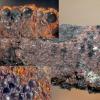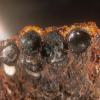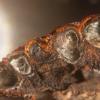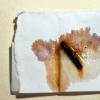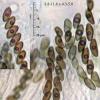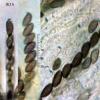
09-01-2026 17:41
Arnold BüschlenHallo, F. dilatata wird von vielen Bryoparasiten

10-01-2026 20:00
Tom SchrierHi all,We found picnidia on Protoparmeliopsis mur

07-01-2026 22:22
 Danny Newman
Danny Newman
Tatraea sp. on indet. hardwood The Swag, Great Sm

10-01-2026 01:18
 Danny Newman
Danny Newman
cf. Neovaginatispora fuckelii on indet. shrub Pre

07-01-2026 10:24
 Danny Newman
Danny Newman
Pezicula sp. on indet. hardwood Appalachian Highl

09-01-2026 10:08
 Blasco Rafael
Blasco Rafael
Hola, en el mismo habitat que la anteriorRetamaDia

08-01-2026 21:22
 Blasco Rafael
Blasco Rafael
Hola, He recogido esta muestra de Orbilia sobre Re

07-01-2026 17:29
 Marc Detollenaere
Marc Detollenaere
Dear Forum,On a barkless Populus I found some smal

10-11-2021 17:33
 Riet van Oosten
Riet van Oosten
Add-on topic http://www.ascofrance.com/forum/7059

07-01-2026 10:05
 Danny Newman
Danny Newman
cf. Chaetospermum on XylariaCosby Campground, Grea
These resupinate stromata grow on wood of Fagus sylvatica. KOH 10% extractable pigments are orange red but peripherically purplish. Asci have an apical apparatus Mlz. negative but bluish in IKI.
Could be H. rubiginosum?
No smell I have noted, perithecia are 375-575 microns high and stromata are small (only 3-4 cm)
Enrique

I guess you studied it in detail because it seemed a bit strange to you. The results of your chromatography are indeed surprising.
I would be glad to see it and I will forward it to Marc to study its HPLC profile.
Thanks in advance,
Jacques
Best wishes
Enrique

I eventually received your specimen, thanks!
I wonder if two different Hypoxylons were not mixed up in your collection because I failed to see any purplish tinge around the orange pigments obtained on a paper with KOH, following your method.
Ascal rings also differ from what you observed in that they turn blue in Melzer and IKI as well.
I first though your fungus might be H. canariense, so far known only from Canary Islands where it is very common, in which I sometimes observed dubious reactions of ascal rings to iodine, but I do think the one you sent me is a depauperate form of H. rubiginosum.
Many undescribed species of Hypoxylon likely are still to be discovered, most of them resembling H. rubiginosum in gross morphology. Keep on screening them!
With best wishes,
Jacques
Enrique
